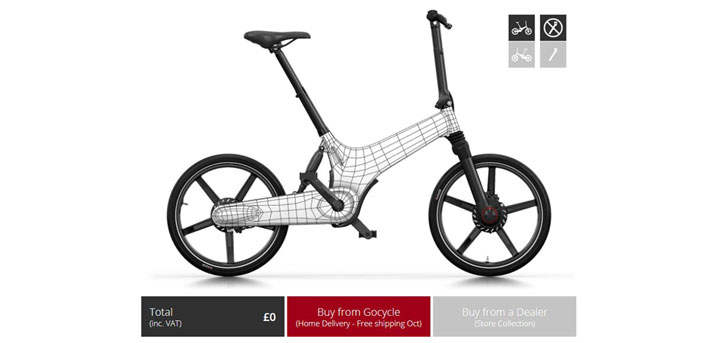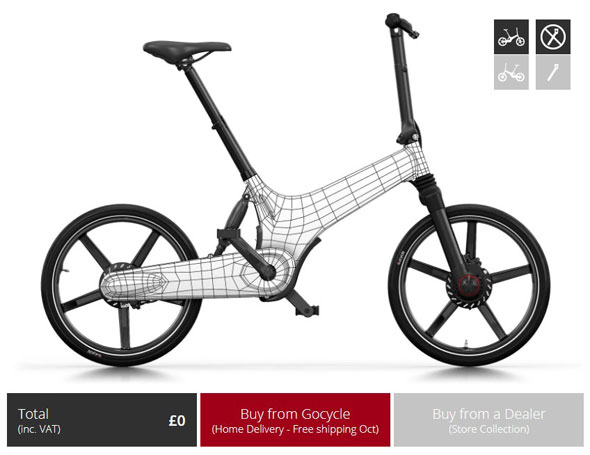
Pull MD Chris Bullick explores why omnichannel means different things to different people – but how we should all keep our eyes on the consumer.
One of the joys about working among Millennials is being able to demonstrate my mantra ‘Everything’s changed – nothing’s changed’ so often. As Omnichannel has emerged I soon felt that sense of déjà vu all over again. So is Omnichannel really a thing? If so, what’s happened that is really new? And what should you be doing about it?
Ever been told in a store: “No sorry, that promotion is only available online?”, or even – “You have to buy online to get that deal?” These illustrate the challenge of omnichannel. The arrival of online has brought consumers myriad benefits and opportunities, but it also complicates things and many purchase journeys are hardly a seamless experience.
Omnichannel arguably looks different depending on how your brand is manifest. Are you a brand that is re-sold by others? Are you yourself a re-seller or retailer who sells other brands, or are you a service or ‘experience’ brand like an airline?
Many years before omnichannel I worked for Procter & Gamble – in fact so many years that it was also pre-Internet. I’ve always thought that P&G brand management taught me some timeless lessons about brand marketing – and despite becoming as enthusiastic a digital marketer as any Millennial, I never cease to be amazed how those lessons hold good in the digital age.
For instance, these unwritten, but otherwise apparently immutable rules:
- Never abdicate your responsibility for your brand consumer or your brand (i.e. to a distribution partner).
- Make the best product in the category and demonstrate its benefits directly to the consumer (i.e.- never leave it to others – e.g. – your distribution partner).
- Distribute your product where your consumer prefers to shop.
- Understand what motivates your channels and deliver it.
- Each party in the value chain will try to commoditise the others – the most powerful brand will win.
The idea was that the consumer’s needs were sacrosanct, and your ultimate priority. The outcomes in a non-digital age were for instance that P&G never (and I’m sure never will) made own-label products. P&G also invented the first ever ‘content marketing’ – soap operas in the 1930s to provide a compelling platform to get their advertising messages directly to the consumer. And P&G ensures that retailers literally can’t afford not to stock their products – the percent of category cash margin derived from their brands mean they are not substitutable.
And you can see how these same principles are manifest in the digital marketplace. Do a search for e.g. ‘Fairy Liquid’ and the first organic results is fromwww.supersavvyme.co.ukP&G has leveraged its combined brand clout to achieve this authority with Google, and make sure that the job of telling their brand story is not abdicated to someone else who has their own interests first.
This also illustrates the omnichannel challenge for FMCG & retail brands. The brand’s message is: “I’m the best, you can buy me anywhere.” The retailer’s message is: I’m the best place to shop – we’ll decide what brand you buy here.”
So in effect there is a kind of matrix of omnichannel activity going on, where both retailers and product brands continue to try to commoditise each other in the value chain. Bricks and mortar retailers want a bigger share of your spend whether it’s on or offline. Product brands want you to buy their brand wherever is easiest for you.
There is a third type of brand for whom the omnichannel opportunity is a bit different. This is what I would call an ‘omni-brand’. Examples would be an airline for instance or say Disney. Both these examples are arguably largely experiential. Airlines for instance are in almost full control of your overall experience – from online marketing, through buying your ticket online, to cabin service. Or Disney who long ago moved from just making films to running theme parks (amazingly the first one was built under the direct supervision of Walt Disney himself in 1955). There are of course Disney shops and merchandise as well. The beauty for this kind of omni-brand is that they have almost complete control of the end-to-end experience and distribution. There is no other party to get in the way. On this basis they ought to be masters of omnichannel.
For product brands on the other hand, ‘omnichannel’ often means dealing with very challenging channel conflict. Pull has worked with our electric bicycle clientGocycle- for instance, not only on providing digital marketing for first their successful Kickstarter promotion –How do you raise $450k in just one month?- but more recently the launch of the highly affordable version of the ‘Best electric bike in the world’.
Gocycle is caught in the cross-sights of two conflicting trends. On the one hand right now e-bikes are the fastest-growing vehicle category world-wide. On the other, the traditional route for bicycle sales - the independent bicycle shop – is in decline all over the world. Gocycle has gradually deployed a ‘blended’ or even omnichannel strategy to deal with this real-life dilemma. They have done it the right way – by focussing less on the channel conflict, and more on the Gocycle buyer.
It all started in a conversation between Pull and Gocycle inventor Richard Thorpe. Pull: Why don’t you have a ‘Buy One’ button on your home page? Richard explained that this might upset dealers whom the existing website largely pointed prospective buyers at. However, in reality these same dealers whom Richard was sending Gocycle leads to would often not sell customers a Gocycle bike, but a cheaper alternative branded e-bike.
So the ‘Buy One’ button was connected to a ‘search for a retailer’ function. If you didn’t live near a retailer, Gocycle would (almost reluctantly) sell you a bike online.
This has gradually migrated to a straight choice for the potential customer to buy online or from a dealer.

This choice was obviously not exactly welcomed by existing stockists, but was driven principally by a desire to give the consumer choice. Some people would just prefer to pick up their bike ready made-up and with a little tutorial on how it works from a cycle shop.
However, Gocycle has also gone to great lengths to make video-based content and tutorials that facilitate un-boxing and setting up a Gocycle safely and effectively at home. The unique Gocycle app is also integrated into the process, and ensures that a Gocycle is not ‘cleared for take-off’ before the user has effectively conducted their own thorough PDI.
In taking this route, Gocycle has lost a few dealers. But they have tended to be the less committed anyway. Going forward, new dealers accept and understand that people will be able to buy a Gocycle online from Gocycle. However, they will also get visits from people who found their bike shop on the Gocycle website, and they will also service Gocycles – whether they were bought from their shop or online.
What makes the Gocycle approach strong is that it starts with the end in mind – the consumer. Having made arguably the best product on the market, Gocycle goes as far as they can to demonstrate its benefits to the consumer – whether that’s through a dealer test-ride or via the vast array of CGI and lifestyle video they use online. After that, where you buy your Gocycle is down to the consumer. Participating dealers are welcome, and the relatively high price ticket give them a good cash margin – equivalent to maybe 10 average bicycle sales. But most importantly – for the consumer the purchase journey is designed with them in mind. So understanding the product, getting hold of one, and getting it serviced are all a breeze, regardless of how they do any of those things. All of which is summed-up nicely by Omnichannel guru Michel Koch who reminded everyone at a recent conference: “Omnichannel does not mean anything to customers: it’s shopping.
If your customer has to think about it: “online, offline – which is best? Where can I use this coupon? Why can’t I get a test-drive somewhere? Then probably you need to think through an omni-channel strategy.
Posted 30 October 2017 by Chris Bullick